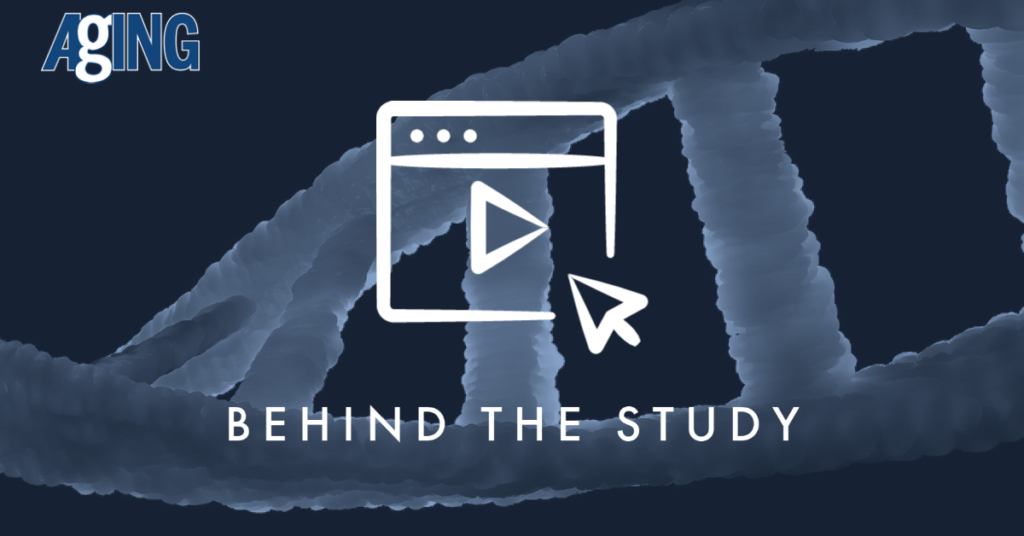“We illustrate our strategy in brain and liver tissue, demonstrating how cell-type specific epigenetic clocks from these tissues can improve tissue-specific estimation of chronological and biological age.”
Aging affects everyone differently. There are two types of aging: chronological aging, which refers to the number of years a person has lived, and biological aging, which reflects how well the body is functioning based on cellular changes. A recent study published as the cover for Volume 16, Issue 22 of Aging reports a new discovery that could revolutionize the way we understand aging and its impact on health.
Understanding Biological Age
Biological age reflects how well the body is aging and can vary based on lifestyle, genetics, and environmental factors. Traditionally, scientists estimate it using epigenetic clocks, which measure DNA methylation, chemical changes that occur over time. Until recently, these clocks could only provide general estimates by analyzing entire tissues, meaning they could not distinguish how different cell types aged within those tissues. A recent study titled “Cell-type Specific Epigenetic Clocks to Quantify Biological Age at Cell-Type Resolution” aims to change that.
The Study: Measuring Aging More Precisely
To explore how different cell types age, researchers from the Chinese Academy of Sciences and Monash University analyzed publicly available DNA methylation data from brain and liver tissues using advanced computer models. The samples included healthy individuals and those with diseases like Alzheimer’s and non-alcoholic fatty liver disease.
In addition to brain and liver samples, the study included data from other tissues such as the prostate, colon, kidney, and skin. This broader dataset ensured that the findings applied to a wide range of conditions.
The Challenge: Understanding Aging at a Cellular Level
One of the biggest challenges in estimating biological age has been the inability to distinguish between different cell types within a tissue. Traditional methods analyze a tissue as a whole, averaging the age of all existing cells. This can hide the fact that some cells age faster than others, making it difficult to identify early signs of disease.
In organs like the brain and liver, different cell types—such as neurons and glial cells in the brain, or hepatocytes in the liver—age at different rates. Without a method to study cell types individually, it has been challenging to identifying which cells are most affected by aging and how they contribute to diseases like Alzheimer’s and liver diseases.
Aging is also influenced by two factors: intrinsic aging, which refers to changes within the cells themselves, and extrinsic aging, which occurs due to changes in cell composition within a tissue. Traditional methods struggle to separate these aspects, limiting their usefulness in developing targeted anti-aging treatments.
The Results: Key Findings in Alzheimer’s and Liver Disease
The study found that different types of cells within the same tissue age at different rates. In Alzheimer’s disease, neurons and glial cells in the brain showed signs of accelerated aging, with glial cells in the temporal lobe being the most affected. This suggests that glial cells could play a crucial role in the progression of neurodegeneration. Similarly, in liver conditions such as fatty liver disease and obesity, hepatocyte-specific clocks detected signs of accelerated aging that were not as easily identified previously.
By applying their approach to brain and liver tissues, the researchers demonstrated that cell-type specific epigenetic clocks can improve tissue-specific estimation of biological age, as well as chronological age.
The Breakthrough: Cell-Type Specific Epigenetic Clocks
Before this study, biological age could only be estimated at the tissue level, providing a general picture but not showing how individual cell types were changing over time. With the development of cell-type specific epigenetic clocks, researchers can now measure aging within specific types of cells, such as neurons in the brain and hepatocytes in the liver. Also, by distinguishing intrinsic aging from changes in cell composition, this new method offers new insights into how diseases develop and progress.
The Impact: What This Means for Healthcare
The implications of this research are significant. Measuring the biological age of individual cell types can lead to earlier diagnosis of age-related diseases, more effective treatments, and personalized healthcare plans. It could also help scientists track the effectiveness of anti-aging therapies and lifestyle changes more accurately, giving individuals better tools to manage their health.
This research also offers valuable insights into age-related conditions like Alzheimer’s and liver diseases, by pinpointing which cells experience the most stress and deterioration, allowing researchers to focus their efforts on the most affected cell types.
Future Prospects and Conclusion
Looking ahead, researchers plan to use this method to study other tissues and cell types, further advancing the field of precision medicine. As more data becomes available, cell-type specific epigenetic clocks could become essential tools for tracking aging at an individual level.
This study represents an exciting step forward in the science of aging. By measuring aging at the cellular level, scientists are moving closer to a future where aging can be better understood and managed.
Click here to read the full research paper in Aging.
—
Aging is indexed by PubMed/Medline (abbreviated as “Aging (Albany NY)”), PubMed Central, Web of Science: Science Citation Index Expanded (abbreviated as “Aging‐US” and listed in the Cell Biology and Geriatrics & Gerontology categories), Scopus (abbreviated as “Aging” and listed in the Cell Biology and Aging categories), Biological Abstracts, BIOSIS Previews, EMBASE, META (Chan Zuckerberg Initiative) (2018-2022), and Dimensions (Digital Science).
Click here to subscribe to Aging publication updates.
For media inquiries, please contact [email protected].


